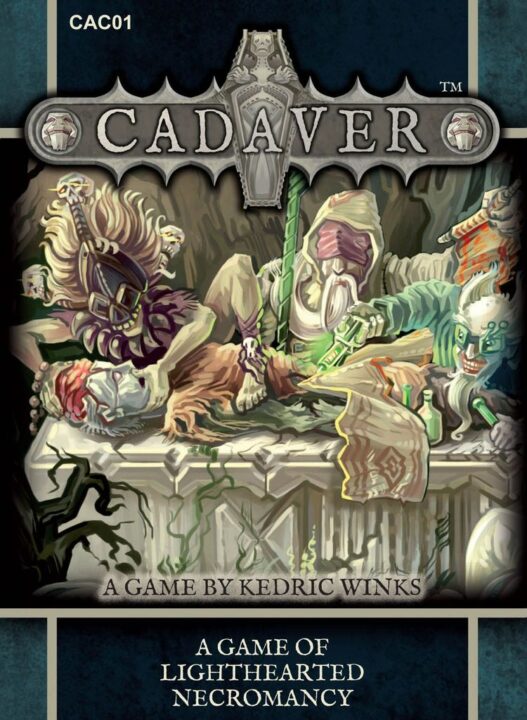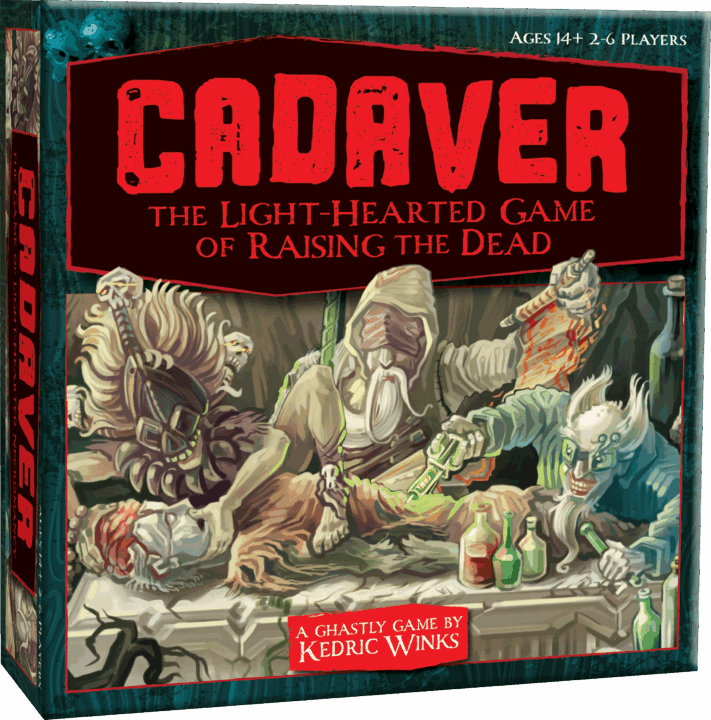Welcome to our spooky review of Cadaver, a board game that blends strategy and luck. With its beautifully macabre art and engaging player interaction, it promises tension, fun, and plenty of replayability. Whether you’re a seasoned strategist or a beginner, this review will uncover if Cadaver is the right choice for you and your friends.
How It Plays
Setting Up
First, set out the board and shuffle the deck of cards. Every player picks a character token and places it at the start. Deal five cards to each player. Leave the rest as a draw pile. Prepare the discard pile next to it.
Gameplay
On your turn, draw a card. Use cards to collect body parts, sabotage your friends, or block their plans. Make strategic choices to advance your character. Keep an eye on their moves, ’cause they might mess up your strategy.
Winning the Game
The first player to assemble their cadaver with all body parts wins. But watch out – luck can be a sneaky opponent, and your friends more so!
Want to know more? Read our extensive strategy guide for Cadaver.
Gameplay Mechanics Analysis of Cadaver
Ah, Cadaver! When my friends suggested playing it, I thought, “What could possibly go wrong?” I was about to find out. Cadaver is like a cocktail party mystery game, but without the cocktails or the party, unless you bring your own, which, trust me, you might need. It’s an indie game that involves loads of strategy, a decent amount of luck, and sometimes, winging it like a seagull on a windy day.
In terms of gameplay mechanics, Cadaver does a solid job. The premise is to play your cards to collect bodies and create a spooky graveyard tableau. The mechanics remind me of a twisted Uno, where instead of skipping turns, you toss corpses into the mix. You’ll love the hand management aspect of it, where you strategize when to unleash a card swap or a clever hand discard. But be warned, your friends could play cards that totally mess up your plans faster than you can say, “mummified monkey!”
The game is generally balanced, although luck plays a sneaky part. It’s like that one friend who shows up uninvited and eats all the snacks. While skill is involved in deciding which actions to take, luck can sway the game depending on the card draw. If you’re not a fan of unpredictability, you might find yourself cursing the shuffle more often than not. But hey, it’s those unpredictable moments that add to the fun and fuel the table banter.
Overall, Cadaver delivers engaging mechanics for both strategy lovers and risk-takers. It keeps play sessions interesting and tension high with its mix of strategy and chance. Next, let’s unearth and evaluate the chilling theme and aesthetics.

Theme and Aesthetics in Cadaver: A Drop Dead Gorgeous Game
When it comes to board games, the theme and aesthetics can make or break the experience. Well, if Cadaver was a person, it would be the quirky goth friend your mom warned you about but you couldn’t help but love. From the box art to the game pieces, Cadaver is dripping with charm that can only be described as beautifully macabre.
The game’s theme revolves around necromancy, spells, and, of course, dead bodies (hence the name, Cadaver). The artwork is both eerie and enchanting. The creators took the phrase “beauty in death” and ran with it, crafting a game that feels like Tim Burton and a Victorian gothic novel had a love child.
The cards are small canvases, each telling its own dark tale. They don’t just look pretty; they fit perfectly within the game’s theme. Some of my favorite moments were spent gazing at the cards, entranced by their intricate details.
Cadaver’s aesthetics extend beyond the cards. The game board itself is a work of art, resembling an old, dusty spell book you might find hidden in a wizard’s attic. The tactile experience adds an extra layer of immersion as you’re drawn into this world of sorcery and skeletons.
The overall presentation of Cadaver is stunning. However, the theme might not be everyone’s cup of (poisonous) tea. If you’re someone who’s creeped out by skeletons or necromancy, then consider this a heads up. But for those of us who thrive on the thrill of the dark and mysterious, Cadaver is a visual feast.
Now that we’ve waxed poetic about its looks, let’s chat about how players interact and engage with this hauntingly delightful game.
Cadaver: Embracing Player Interaction and Engagement
Cadaver is a board game that knows how to pull players into its eerie world, making you feel like you’re really part of a spooky mystery. Right from the start, you find yourself plotting and scheming with your fellow players. The game mechanics encourage you to work together, share insights, and even throw a little mischief into the mix. Trust me, when you find yourself whispering plans with a friend while side-eyeing another, you realize Cadaver’s nailed player interaction.
One of the things I truly enjoy about Cadaver is the sense of tension it creates. Every player action matters. You’re always engaged, trying to outwit opponents, while hoping they don’t outsmart you first! The exchanges in Cadaver are often laced with humor, frustration, and occasional friendly betrayal. It’s like a potluck of emotions, and everyone brings something different to the table.
What keeps me coming back for more is the way players react to each other’s moves. Cadaver doesn’t allow you to sit idly by; you’re always involved, whether planning your next move or watching others squirm over theirs. The game thrives on this engagement, making each round interesting and lively.
However, some might find the interaction a bit intense, especially if you’re not a fan of negotiation or confrontation in games. Still, for those who love a bit of friendly competition and stirring up some drama, Cadaver is a delightful choice.
Channel your inner Sherlock and prepare for surprises, because the next discussion will dive into Cadaver’s replayability and strategy depth.
Replayability and Strategy Depth in Cadaver
When it comes to playing Cadaver, my friends and I realized just how addictive this game can be. You’d think playing a game with a macabre theme might get old fast, but nope! It turns out that Cadaver has some pretty decent staying power on our game nights.
First off, the strategies shift much more than my cat’s mood when hungry. Every game feels like a fresh riddle to solve. The way you manage your cards and try to outsmart your opponents can make or break your chances of winning. It’s like chess but with corpses. And let me tell you, I’ve lost a few rounds by getting too cocky or convinced that my master plan could not possibly fail. Spoiler alert: it did.
Replayability is boosted by variable setups and slightly different rules that keep things spicy. It’s like adding a twist of lime to your usual drink. You never know which ‘cadaver’ you might dig up next. Just when you think you’ve got the game mechanics down, your buddy throws a wrench in your strategy with their own sneaky plays.
The depth of strategy means you can keep coming back, discovering new ways to play and adapt. It requires sharp thinking, not just luck—thank the board game gods!
Overall, the constant need to adjust and rethink means I confidently recommend Cadaver for strategy fans looking for a mix of cunning, laughter, and maybe the occasional zombie hand.
Conclusion
Cadaver mixes strategy, luck, and morbid charm. Perfect for dark game lovers and strategic minds. Try it, but brace for surprises. This concludes the review.


